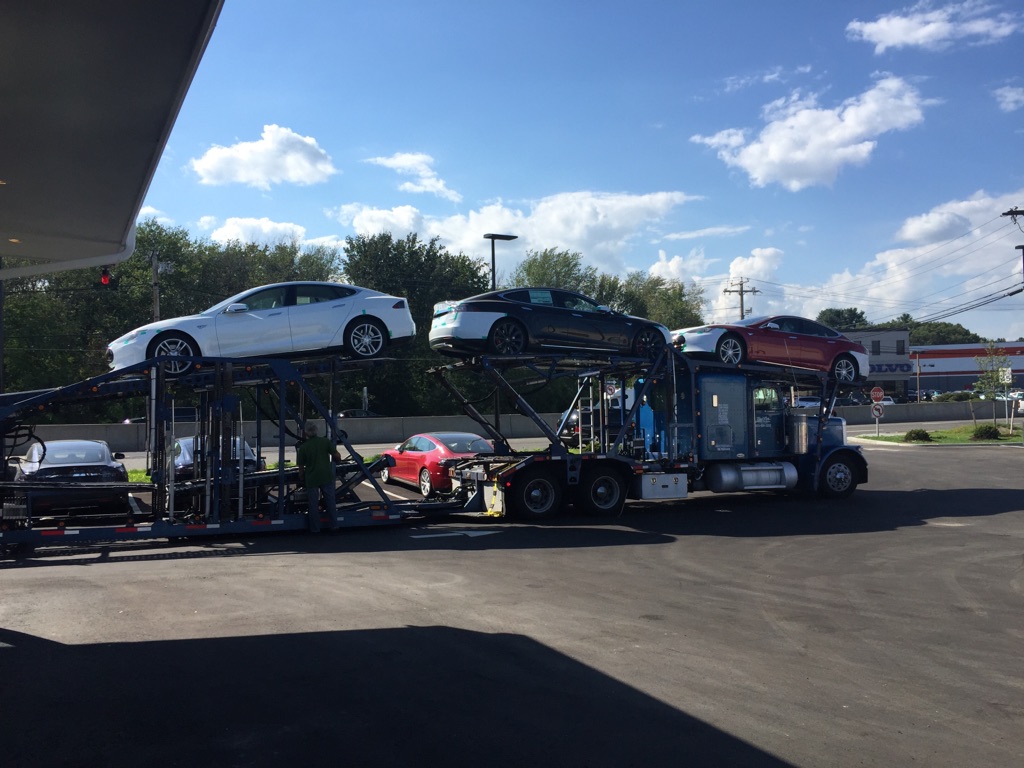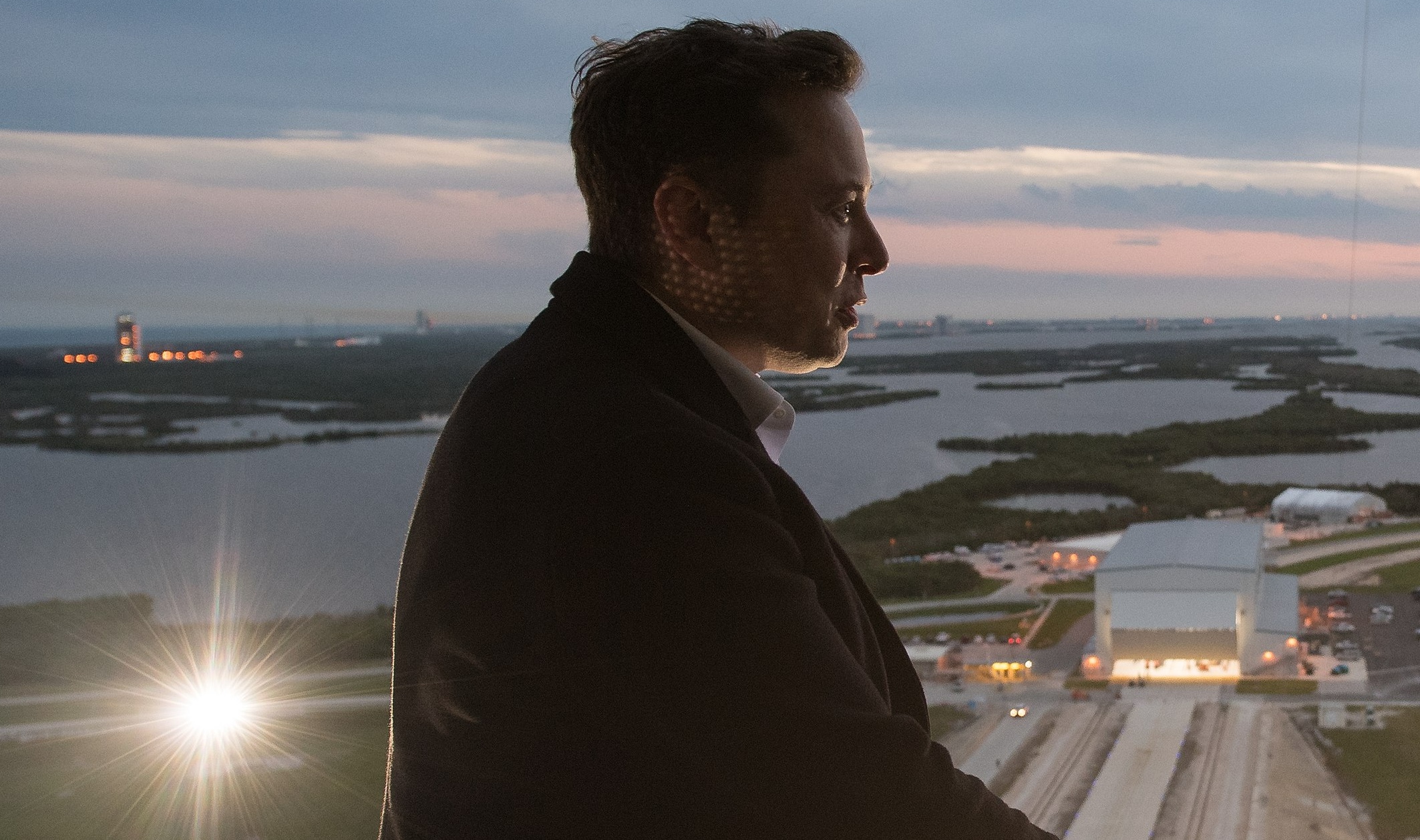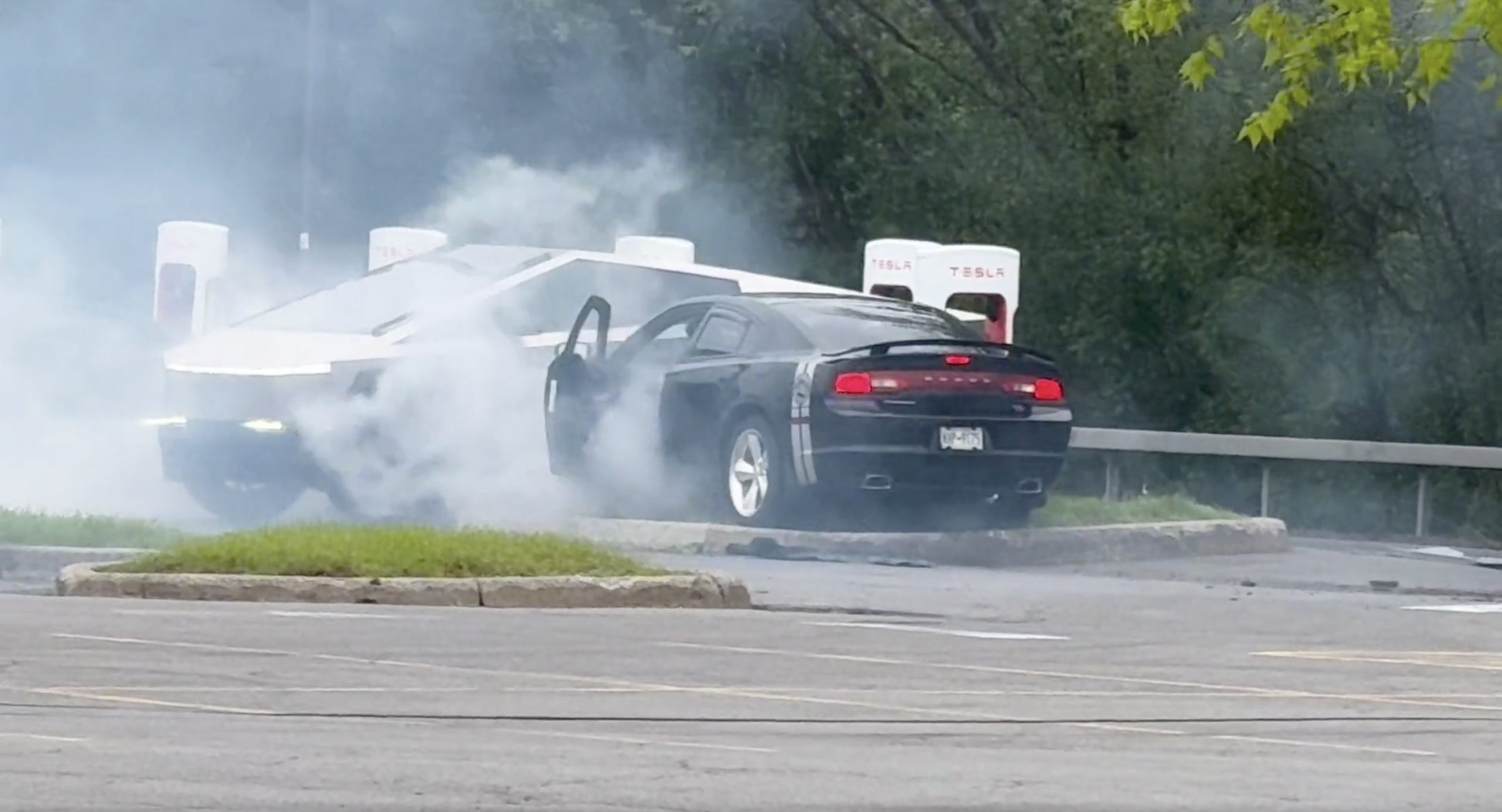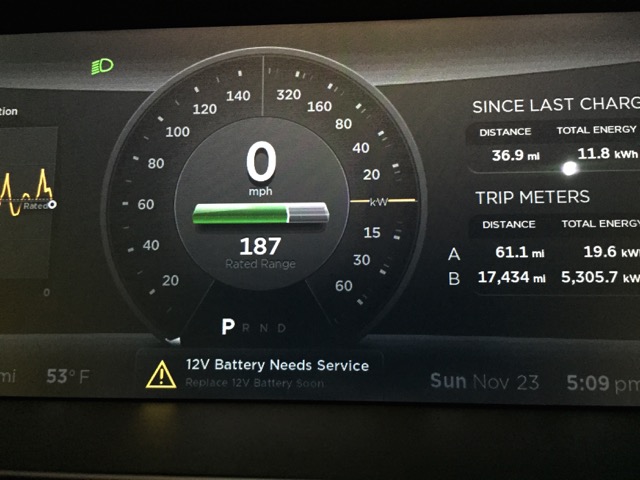Lifestyle
Should I Buy the Tesla Extended Service Agreement?

Tesla’s basic warranty for the Model S covers 50,000 miles or 4 years, whichever comes first. Once that point is reached, you have 30 days to decide on whether you want to further extend warranty and sign up for the Tesla Extended Service Agreement (ESA).
With 48,000 miles under my belt and averaging 3,000 miles per month, I’m faced with the tough decision – to ESA, or not ESA, that is the question. I’ll describe my thoughts on Tesla’s ESA (as it relates to me), but ultimately you’ll want to make your own decision on what’s best for you.
Tesla Extended Service Agreement (ESA)
First it’s good to understand how Tesla describes its extended warranty program. According to Tesla,
“Tesla’s extended service program covers the repair or replacement of Model S parts due to defects in materials or workmanship provided by Tesla. Coverage lasts for four years or 50,000 miles (whichever comes first) and begins on the date your warranty expires, as long as you purchase this service within 30 days of your warranty’s expiration.”
There are really two main points to the statement:
- The duration for the additional coverage + timeframe for signing up
- Tesla ESA covers defects in materials or workmanship on parts by Tesla
Exclusions
As with most warranties, wear and tear is not covered by the extended service. Even a Model S with its limited number of moving parts, it still has every day items such as tires, shocks, door seals, fluids, 12V battery, brake pads/parts, filters, etc. that would wear over time, and thus require maintenance.
A key point to note when thinking about the ESA is that your Tesla is already covered for 8 years, and infinite miles, on the main battery and motor(s). Having an extended warranty to cover these items won’t matter.
Cost for Extending Warranty

The extended warranty costs $4,000 which is on par with the price charged by other premium car manufacturers. However, what’s different about Tesla’s ESA program is the additional $200 deductible.
While you will only have to pay for it once for the part being replaced, even if the same part were to fail multiple times, you have to keep in mind that the $200 is charged per part. For example, should a single Model S door handle fail, the deductible would be $200. However, in the unfortunate event that all four door handles fail, you might be shelling out an $800 deductible. (someone please confirm in the comments below)
The extended warranty can be transferred to a new owner for a $100 fee, but it cannot be transferred to a car dealer or third party reseller.
Grey Area with Coverage
The Tesla Extended Service Agreement states:
“Tampering with the Vehicle and its systems, including installation of non-Tesla accessories or parts or their installation, or any damage directly or indirectly caused by, due to or resulting from the installation or use of non-Tesla parts or accessories;”
Does this apply to Model S owners who have upgraded with aftermarket lighting accessories such as the popular “Lighted T” or even a dash cam?
Another passage on regular maintenance is a bit fuzzy to me. According to the ESA,
“If requested, proof of required service, including receipts showing date and mileage of the Vehicle at the time of service, must be presented before any repairs under this Vehicle ESA commence. Service within 1,000 miles and/or 30 days of Tesla’s recommended intervals shall be considered compliant with the terms of this Vehicle ESA.”
Tesla has been all over the place on what it recommends for its maintenance intervals. The official paperwork indicates annual maintenance is every 12,500 miles or 12 months, whichever comes first, although, depending on which Tesla Service Center you speak with, you may hear a different account on what the service interval should be.
My personal belief is that Tesla just intends owners to have an annual service regardless of mileage (and that’s the plan I’ve been following as suggested by my service center), but this frequency for maintenance technically wouldn’t meet Tesla’s requirement for extended warranty, especially given the number of miles I put on per year. I drive a lot, but I doubt I top those that embark on epic cross-country road trips in the Model S.
How Much Value Can I Get?
As with all insurance, trying to derive value from the plan really comes down to a “bet” on whether you think you might need coverage, and also whether coverage on the parts + labor would exceed the cost of the coverage itself.
Averaging 32,000 miles of driving per year, Tesla’s extended warranty will last me a whopping 18 months. It costs $4,000 which backs out to $222/month over 18 months, plus a $200 per item deductible.
I used my historical Model S service records as a sample to see what could potentially be covered down the road with the ESA. I should note that other than the annual service cost of $600 which I’ve already paid, I’ve spent $0 for service so far.
- 12V battery failure (7 months) (wouldn’t be covered by extended warranty)
- 17″ screen reacting to static electricity (missing MCU ground) (7 months) (wouldn’t be covered by extended warranty)
- Sunroof rattle on back roads (shims added) (7 months) (wouldn’t be covered by extended warranty)
- UMC failure (8 months) (may be covered by extended warranty)
- Front right tire rubbing wheel well (11 months) (wouldn’t be covered by extended warranty)
- Bad ball joint (11 months) (would be covered by extended warranty)
- Leaky sunroof seal (12 months) (wouldn’t be covered by extended warranty)
- Charge port rings discolored (12 months) (would be covered by extended warranty)
- Key fob falling apart (13 months) (wouldn’t be covered by extended warranty)
- Drive unit failure (15 months) (covered by infinite mile drive unit warranty)
Based on the above I would have had 2 or 3 of the 10 total issues that would have been covered by the extended warranty. One was purely cosmetic (charge port rings). The other two were not. A new UMC is $600, so paying $4,000 for warranty coverage for it makes no sense let alone it’s not clear if the UMC is even covered. The bad ball joint is really the only thing of significant value that would have been covered and I find it difficult to believe that it would cost more than $4,000 plus the $200 deductible to replace.
Based on my own history with needing repairs, it doesn’t seem to make sense for me to purchase the extended warranty. However there are big ticket items that could potentially go wrong and make the extended warranty bring tremendous value. Unfortunate (but rare) occurrences of Model S defects / failures as follows:
- The 17″ screen could develop bubbles (est. $2,900)
- The main control unit (MCU) could fail (est. $6,000)
I rarely hear about a Model S needing big repairs which I hope is a testament to how durable the vehicle is, or it could mean Tesla is covering it on their own through more discreet service bulletins. I started a discussion/poll over on TMC to see how many owners actually had to pay for their service.
Summary
 What am I going to do? My high mileage driving greatly reduces any value for purchasing Tesla’s Extended Service Agreement.
What am I going to do? My high mileage driving greatly reduces any value for purchasing Tesla’s Extended Service Agreement.
Based on the data I’ve collected over the last 18 months and 50,000 miles of driving, the lack of having any major services leads me to believe that having a Tesla ESA is not a good investment for me.
Now, should I put my money aside for a just-in-case type of repair? Probably. But, let’s be real. The lack of servicing is truly a testament to how amazing the Tesla Model S is. No parts to worry about, no major issues, and no out-of-pocket surprises.
My plan is to take the $4,000 I had set aside for the extended warranty and put it in Tesla stock ($TSLA). I believe in the company, love the car, and I think it’s a far better investment than the Extended Service Agreement would be.
Elon Musk
X account with 184 followers inadvertently saves US space program amid Musk-Trump row
Needless to say, the X user has far more than 184 followers today after his level-headed feat.

An X user with 184 followers has become the unlikely hero of the United States’ space program by effectively de-escalating a row between SpaceX CEO Elon Musk and President Donald Trump on social media.
Needless to say, the X user has far more than 184 followers today after his level-headed feat.
A Near Fall
During Elon Musk and Donald Trump’s fallout last week, the U.S. President stated in a post on Truth Social that a good way for the United States government to save money would be to terminate subsidies and contracts from the CEO’s companies. Musk responded to Trump’s post by stating that SpaceX will start decommissioning its Dragon spacecraft immediately.
Musk’s comment was received with shock among the space community, partly because the U.S. space program is currently reliant on SpaceX to send supplies and astronauts to the International Space Station (ISS). Without Dragon, the United States will likely have to utilize Russia’s Soyuz for the same services—at a significantly higher price.
X User to the Rescue
It was evident among X users that Musk’s comments about Dragon being decommissioned were posted while emotions were high. It was then no surprise that an X account with 184 followers, @Fab25june, commented on Musk’s post, urging the CEO to rethink his decision. “This is a shame this back and forth. You are both better than this. Cool off and take a step back for a couple days,” the X user wrote in a reply.
Much to the social media platform’s surprise, Musk responded to the user. Even more surprising, the CEO stated that SpaceX would not be decommissioning Dragon after all. “Good advice. Ok, we won’t decommission Dragon,” Musk wrote in a post on X.
Not Planned, But Welcomed
The X user’s comment and Musk’s response were received extremely well by social media users, many of whom noted that @Fab25june’s X comment effectively saved the U.S. space program. In a follow-up comment, the X user, who has over 9,100 followers as of writing, stated that he did not really plan on being a mediator between Musk and Trump.
“Elon Musk replied to me. Somehow, I became the accidental peace broker between two billionaires. I didn’t plan this. I was just being me. Two great minds can do wonders. Sometimes, all it takes is a breather. Grateful for every like, DM, and new follow. Life’s weird. The internet’s weirder. Let’s ride. (Manifesting peace… and maybe a Model Y.)” the X user wrote.
Lifestyle
Tesla Cybertruck takes a bump from epic failing Dodge Charger
The Cybertruck seemed unharmed by the charging Charger.

There comes a time in a driver’s life when one is faced with one’s limitations. For the driver of a Dodge Charger, this time came when he lost control and crashed into a Tesla Cybertruck–an absolute epic fail.
A video of the rather unfortunate incident was shared on the r/TeslaLounge subreddit.
Charging Charger Fails
As could be seen in the video, which was posted on the subreddit by Model Y owner u/Hammer_of_something, a group of teens in a Dodge Charger decided to do some burnouts at a Tesla Supercharger. Unfortunately, the driver of the Charger failed in his burnout or donut attempt, resulting in the mopar sedan going over a curb and bumping a charging Cybertruck.
Ironically, the Dodge Charger seemed to have been parked at a Supercharger stall before its driver decided to perform the failed stunt. This suggests that the vehicle was likely ICE-ing a charging stall before it had its epic fail moment. Amusingly enough, the subreddit member noted that the Cybertruck did not seem like it took any damage at all despite its bump. The Charger, however, seemed like it ran into some trouble after crashing into the truck.
Alleged Aftermath
As per the the r/TeslaLounge subreddit member, the Cybertruck owner came rushing out to his vehicle after the Dodge Charger crashed into it. The Model Y owner then sent over the full video of the incident, which clearly showed the Charger attempting a burnout, failing, and bumping into the Cybertruck. The Cybertruck owner likely appreciated the video, in part because it showed the driver of the Dodge Charger absolutely freaking out after the incident.
The Cybertruck is not an impregnable vehicle, but it can take bumps pretty well thanks to its thick stainless steel body. Based on this video, it appears that the Cybertruck can even take bumps from a charging Charger, all while chilling and charging at a Supercharger. As for the teens in the Dodge, they likely had to provide a long explanation to authorities after the incident, since the cops were called to the location.
Lifestyle
Anti-Elon Musk group crushes Tesla Model 3 with Sherman tank–with unexpected results
Ironically enough, the group’s video ended up highlighting something very positive for Tesla.

Anti-Elon Musk protesters and critics tend to show their disdain for the CEO in various ways, but a recent video from political action group Led By Donkeys definitely takes the cake when it comes to creativity.
Ironially enough, the group’s video also ended up highlighting something very positive for Tesla.
Tank vs. Tesla
In its video, Led By Donkeys featured Ken Turner, a 98-year-old veteran who served in the British army during World War II. The veteran stated that Elon Musk, the richest man in the world, is “using his immense power to support the far-right in Europe, and his money comes from Tesla cars.”
He also noted that he had a message for the Tesla CEO: “We’ve crushed fascism before and we’ll crush it again.” To emphasize his point, the veteran proceeded to drive a Sherman tank over a blue Tesla Model 3 sedan, which, of course, had a plate that read “Fascism.”
The heavy tank crushed the Model 3’s glass roof and windows, much to the delight of Led By Donkeys’ commenters on its official YouTube channel. But at the end of it all, the aftermath of the anti-Elon Musk demonstration ended up showcasing something positive for the electric vehicle maker.
Tesla Model 3 Tanks the Tank?
As could be seen from the wreckage of the Tesla Model 3 after its Sherman encounter, only the glass roof and windows of the all-electric sedan were crushed. Looking at the wreckage of the Model 3, it seemed like its doors could still be opened, and everything on its lower section looked intact.
Considering that a standard M4 Sherman weighs about 66,800 to 84,000 pounds, the Model 3 actually weathered the tank’s assault really well. Granted, the vehicle’s suspension height before the political action group’s demonstration suggests that the Model 3’s high voltage battery had been removed beforehand. But even if it hadn’t been taken off, it seemed like the vehicle’s battery would have survived the heavy ordeal without much incident.
This was highlighted in comments from users on social media platform X, many of whom noted that a person in the Model 3 could very well have survived the ordeal with the Sherman. And that, ultimately, just speaks to the safety of Tesla’s vehicles. There is a reason why Teslas consistently rank among the safest cars on the road, after all.
-

 Elon Musk1 day ago
Elon Musk1 day agoTesla investors will be shocked by Jim Cramer’s latest assessment
-

 News6 days ago
News6 days agoTesla Robotaxi’s biggest challenge seems to be this one thing
-

 News2 weeks ago
News2 weeks agoTesla’s Grok integration will be more realistic with this cool feature
-

 Elon Musk2 weeks ago
Elon Musk2 weeks agoElon Musk slams Bloomberg’s shocking xAI cash burn claims
-

 News2 weeks ago
News2 weeks agoTesla China roars back with highest vehicle registrations this Q2 so far
-

 News2 weeks ago
News2 weeks agoTexas lawmakers urge Tesla to delay Austin robotaxi launch to September
-

 News2 weeks ago
News2 weeks agoTesla dominates Cars.com’s Made in America Index with clean sweep
-

 Elon Musk1 week ago
Elon Musk1 week agoFirst Look at Tesla’s Robotaxi App: features, design, and more






















